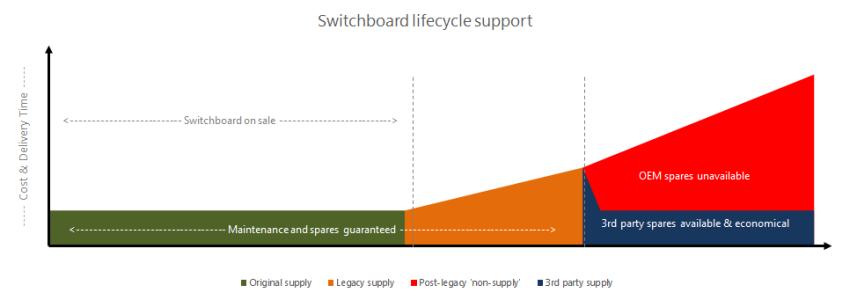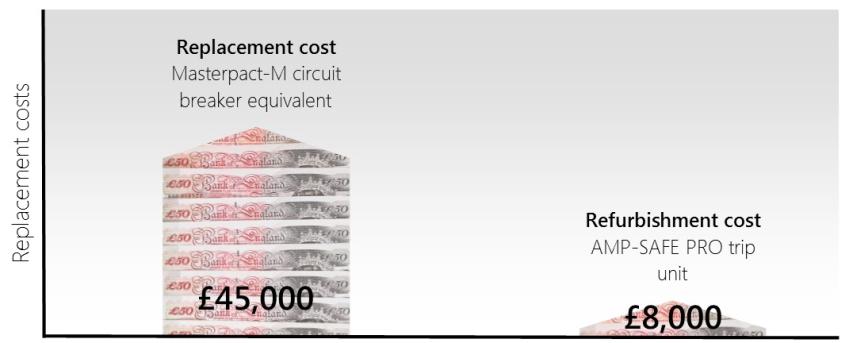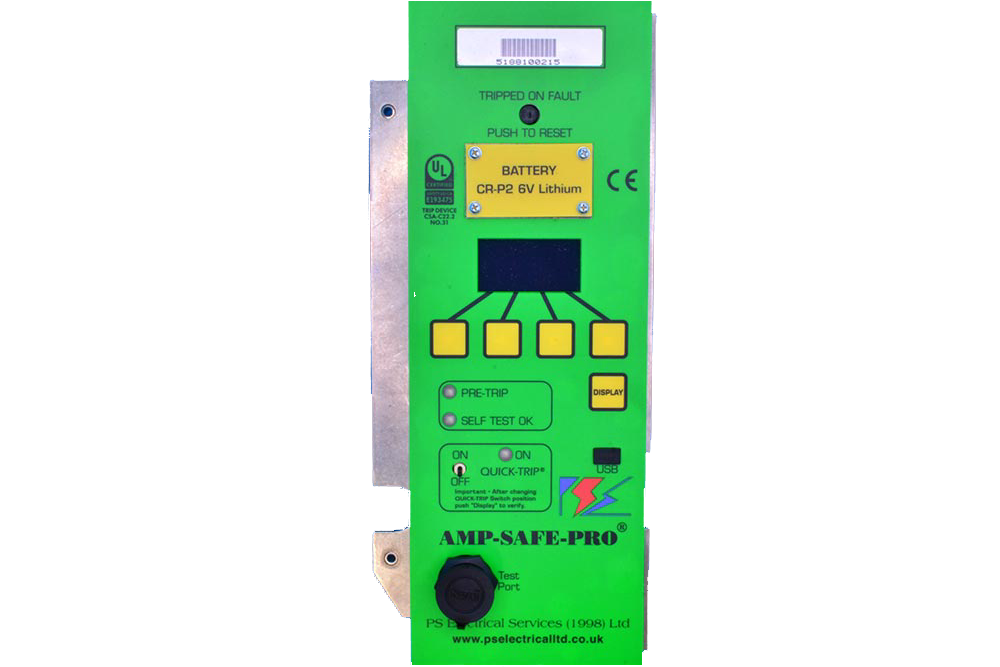You need an account to access this content
Create a free account and get access to all downloads and more!
A trip unit replacement avoids the expense of total circuit breaker replacement, whilst safeguarding your circuit breakers against power fluctuations.

A trip unit works by sensing an abnormal condition in an electric power circuit and tripping the circuit breaker to protect the circuit from damage. An electronic trip unit, such as the AMP-SAFE PRO is programmable device which will receive inputs, compare them to set points, and provide outputs for circuit breaker operation. In addition to providing a means to open and close its contacts manually, a circuit breaker must automatically open its contacts when an overcurrent condition is sensed.
Circuit breakers are designed to deliver years of reliable, untroubled service. But they don’t last forever.
 The AMP-SAFE PRO economically extends the life of circuit breakers and reduce maintenance downtime
The AMP-SAFE PRO economically extends the life of circuit breakers and reduce maintenance downtime
During original production
During the time when a circuit breaker is actively marketed and promoted the manufacturer will offer full service, support and parts either direct to end-users or through a network of distributors (the green area on the chart). The manufacturers and their distributors actively support and develop their current product range.
Once a circuit breaker is superseded by a newer model, support continues but it changes (the orange area on the chart).
The end-user is affected by this:
This type of lifecycle is common for most technical products. However, the circuit breaker market is different to others. Whereas the next generation of television or computer offers fundamental improvements, the differences on newer circuit breakers are nominal. Electricity supply has stayed the same so there’s rarely a major technical reason to upgrade from one model to another.
After production ends
Most manufacturers offer at least ten years support for circuit breakers after their production run finishes. At this point, end-users enter the red area of the chart. Original units and other spare parts are no longer available from the manufacturer, only in limited quantities from specialist distributors.
The impact can be dramatic for end-users:
In normal circumstances this is the point at which an upgrade is logical.
But it’s hard to justify an upgrade for circuit breakers:
The 3rd party after-market will play a part here. This is represented by the blue area of the chart. This is a golden opportunity for end-users to continue using old equipment to its full potential at a fraction of the cost of a full replacement or upgrade.
Circuit breaker installations are not simple. They require planning, designing, approvals and certification.
This comes at a price.
 Using a trip unit replacement is far more economical than replacing an entire circuit breaker
Using a trip unit replacement is far more economical than replacing an entire circuit breaker
The advantages of using a trip unit replacement will help to avoid the negatives of an upgrade.
Another key reason in retaining circuit breakers for as long as possible is to avoid needless waste. Circuit breakers are replaced when one critical and usually inexpensive part is unavailable. Trip units are often the culprits because they’re designed to fail. They make sure the circuit breaker stays perfectly serviceable.
There’s plenty of examples when we don’t replace the ‘main unit’ when a component fails. We don’t replace a car when its windscreen breaks or its tyres wear out. We don’t change a light when its bulb blows.
The advantages of extending the life of a circuit breaker by using 3rd party components like the AMP-SAFE PRO are:
Most 3rd-party manufacturers of after-market components promote their products as being ‘as good as the original’. This is not always true. Tey are often much better than the original.
There are many advantages to a component designed and built years after the original:
Using a trip unit replacement may only be a temporary reprieve – all circuit breakers will have to be replaced eventually. Extending their life simply postpones the expense until the time when it is suits the end-user.
| Product name | |
|---|---|
| Masterpact M trip unit: AMP-SAFE PRO The AMP-SAFE PRO is the only UL and CE-listed replacement for STR breaker protection units and is a direct replacement for a Merlin Gerin Masterpact M breaker protection unit. Find out more |  |

Didn't find what you were looking for? Contact us, we’ll be happy to answer any questions you may have and help you with your business needs.
Interested in another country? Find your local representative.